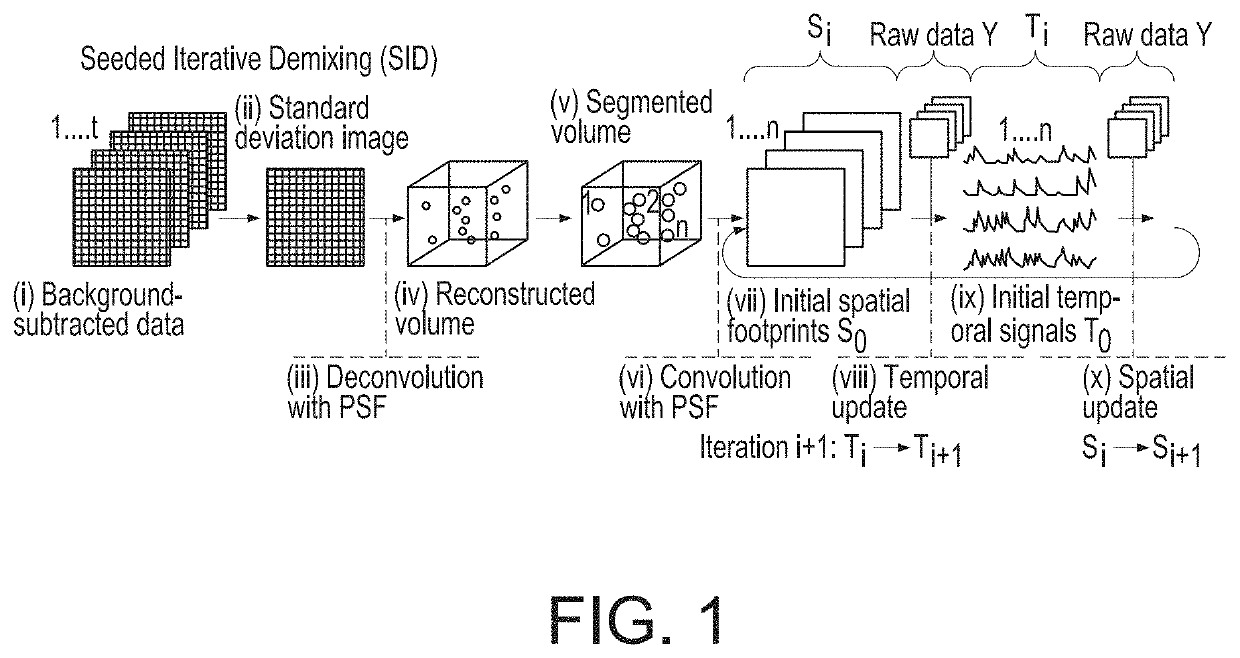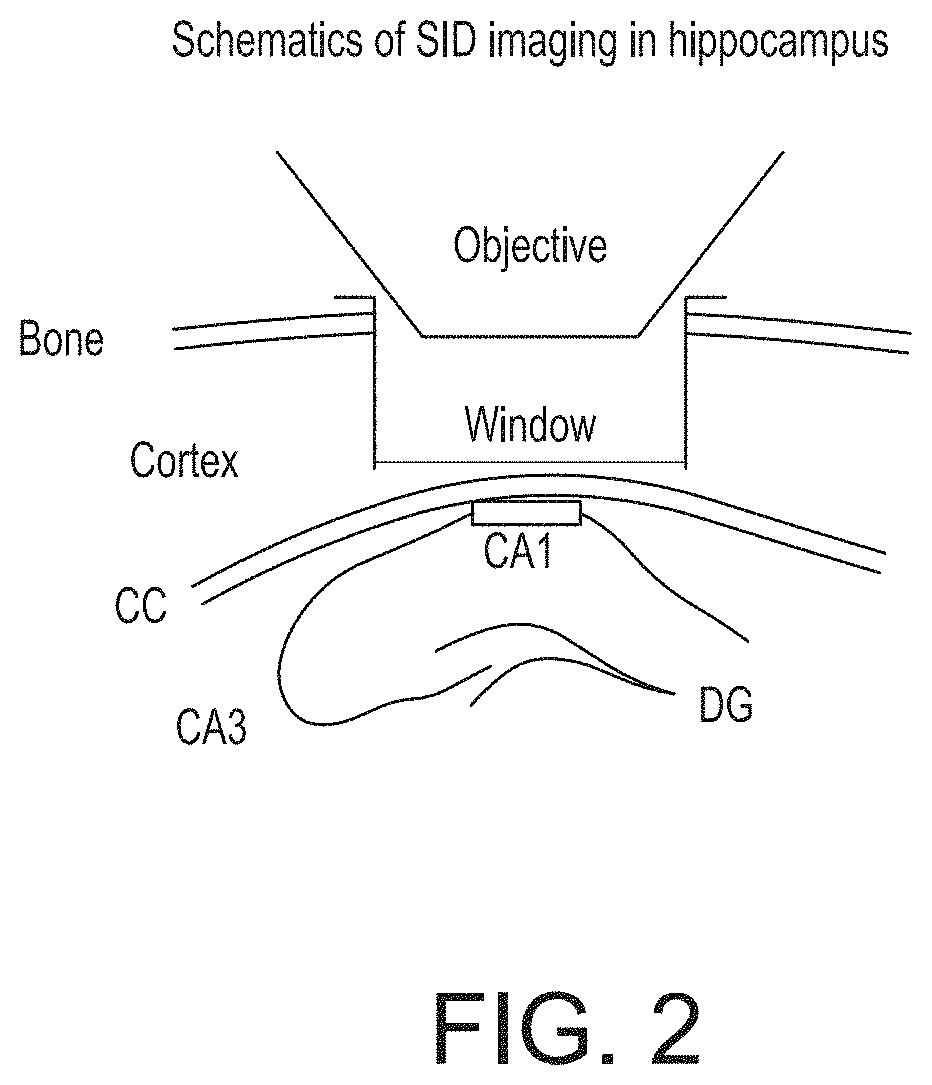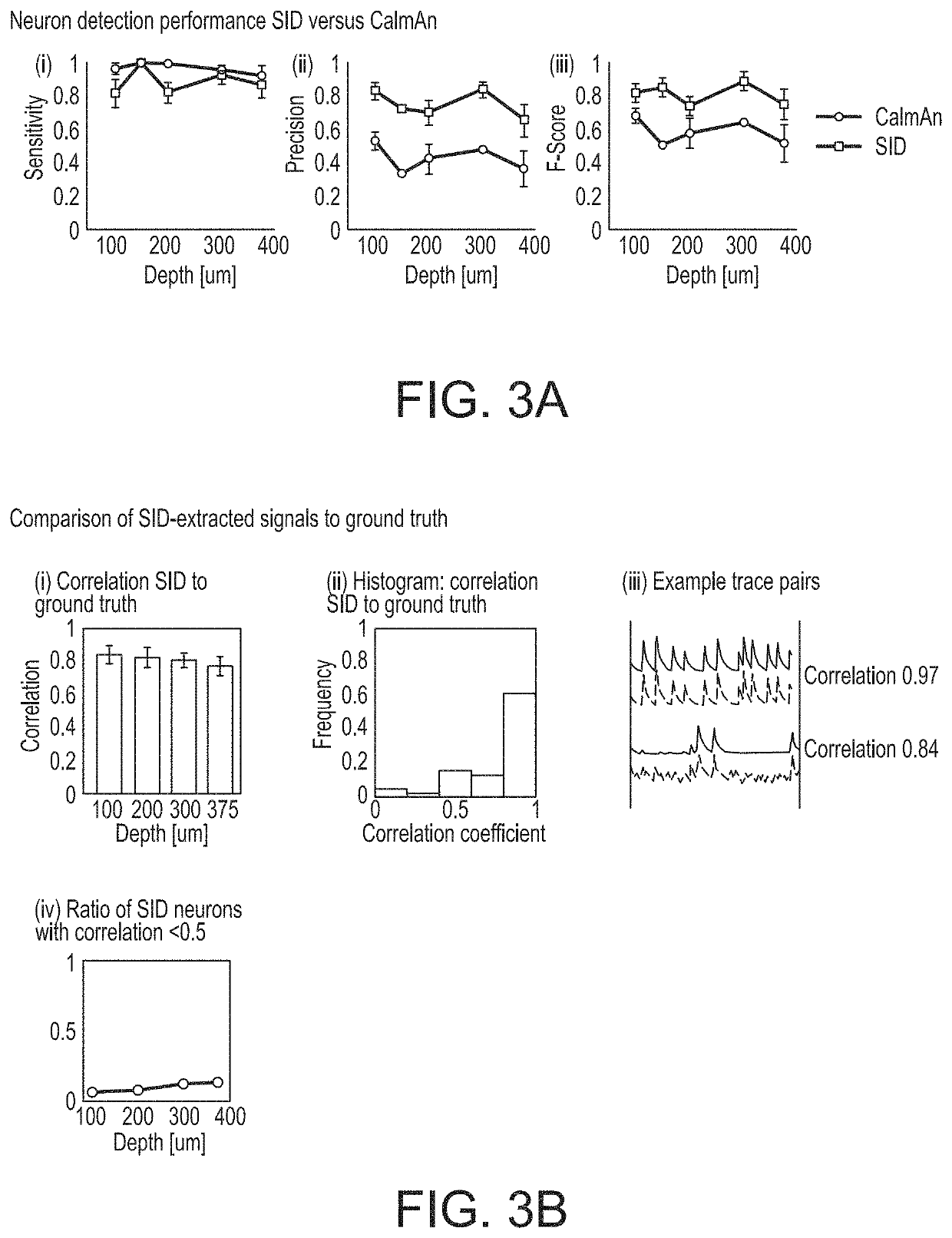Imaging signal extraction apparatus and methods of using same
a signal extraction and signal technology, applied in the field of extracting signals, can solve the problems of fundamental trade-off between serial and parallel acquisition schemes, difficult single-cell resolution functional imaging of large volumes at high speed and great depth in scattering tissue, achieved at the expense of temporal resolution, etc., to achieve efficient signal extraction, reduce computational cost, and increase temporal and spatial fidelity
- Summary
- Abstract
- Description
- Claims
- Application Information
AI Technical Summary
Benefits of technology
Problems solved by technology
Method used
Image
Examples
examples
[0070]The following examples confirm the effectiveness of the disclosed approaches using simulated data sets. In comparison to conventional deconvolution, the disclosed embodiments provide robust signal demixing up to a depth of about four scattering lengths (corresponding to up to ˜400 μm in a mouse cortex). In addition, when applied to weakly scattering samples such as larval zebrafish, the disclosed algorithm delivers increased temporal and spatial fidelity.
[0071]To verify and characterize the demixing performance of the SID approach, it was applied to synthetic datasets containing randomly positioned neurons with partially correlated, GECI-like activity. A simulated scattered PSF using a Monte-Carlo approach38 was generated, using values from literature for its parameters7,39. Then, volumetric frames containing the randomly positioned neurons with the scattered PSF were convolved to yield synthetic LFM raw data corresponding to a depth of approx. 400 μm in mouse cortex. Camera n...
PUM
 Login to View More
Login to View More Abstract
Description
Claims
Application Information
 Login to View More
Login to View More - R&D
- Intellectual Property
- Life Sciences
- Materials
- Tech Scout
- Unparalleled Data Quality
- Higher Quality Content
- 60% Fewer Hallucinations
Browse by: Latest US Patents, China's latest patents, Technical Efficacy Thesaurus, Application Domain, Technology Topic, Popular Technical Reports.
© 2025 PatSnap. All rights reserved.Legal|Privacy policy|Modern Slavery Act Transparency Statement|Sitemap|About US| Contact US: help@patsnap.com



